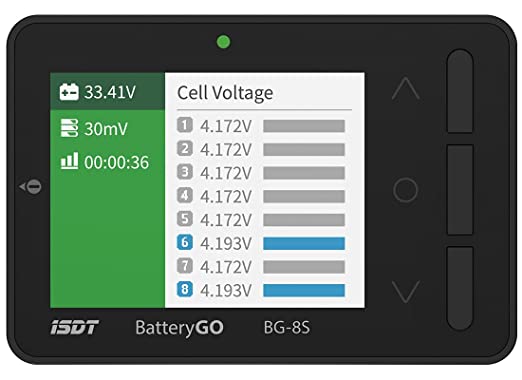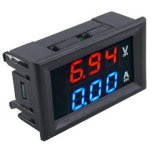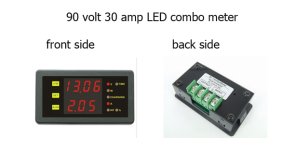kmxtornado
10 kW
UPDATE
I will be using an inline watt meter between the charger and battery to get my numbers. Accidnwtally bought a 200a one but the wires were way way too big for my little wires. Will reorder.
The charger I bought is a metal case one, 5A. It replaces the stock plastic case one which I’m kinda worried would/could melt. I’ll just it as a backup when my new one comes in in mid November.
ORIGINAL POST
I'm been heavy into RC cars and FPV quads the past couple of years and enjoy being able to see and set the parameters for charging my batteries. It's a little unnerving for me to just plug an ebike battery into the wall using the charger it comes with and not know anything about what's going on other than waiting for a green light.
Do any of you charge your LiFePo4 batteries using some sort of hobby grade charger or charger with a screen that lets you set your own amperage and shows how many volts currently in the LiFePo4? I generally like to see voltage on each cell for 1-4S LiPo batteries. How does that work with LiFePo4? My hobby grade charger maxes out at 6S, but I'd need 16S for a 48v LifePo4. I imagine I'm not going to have a screen with any sort of charger that shows the voltages of each of the dozens of cells in there. Also there's no balance lead for me to be able to do that anyway (but maybe the BMS takes care of that?).
Wondering how you guys do it, if you do. Thanks.
I will be using an inline watt meter between the charger and battery to get my numbers. Accidnwtally bought a 200a one but the wires were way way too big for my little wires. Will reorder.
The charger I bought is a metal case one, 5A. It replaces the stock plastic case one which I’m kinda worried would/could melt. I’ll just it as a backup when my new one comes in in mid November.
ORIGINAL POST
I'm been heavy into RC cars and FPV quads the past couple of years and enjoy being able to see and set the parameters for charging my batteries. It's a little unnerving for me to just plug an ebike battery into the wall using the charger it comes with and not know anything about what's going on other than waiting for a green light.
Do any of you charge your LiFePo4 batteries using some sort of hobby grade charger or charger with a screen that lets you set your own amperage and shows how many volts currently in the LiFePo4? I generally like to see voltage on each cell for 1-4S LiPo batteries. How does that work with LiFePo4? My hobby grade charger maxes out at 6S, but I'd need 16S for a 48v LifePo4. I imagine I'm not going to have a screen with any sort of charger that shows the voltages of each of the dozens of cells in there. Also there's no balance lead for me to be able to do that anyway (but maybe the BMS takes care of that?).
Wondering how you guys do it, if you do. Thanks.




